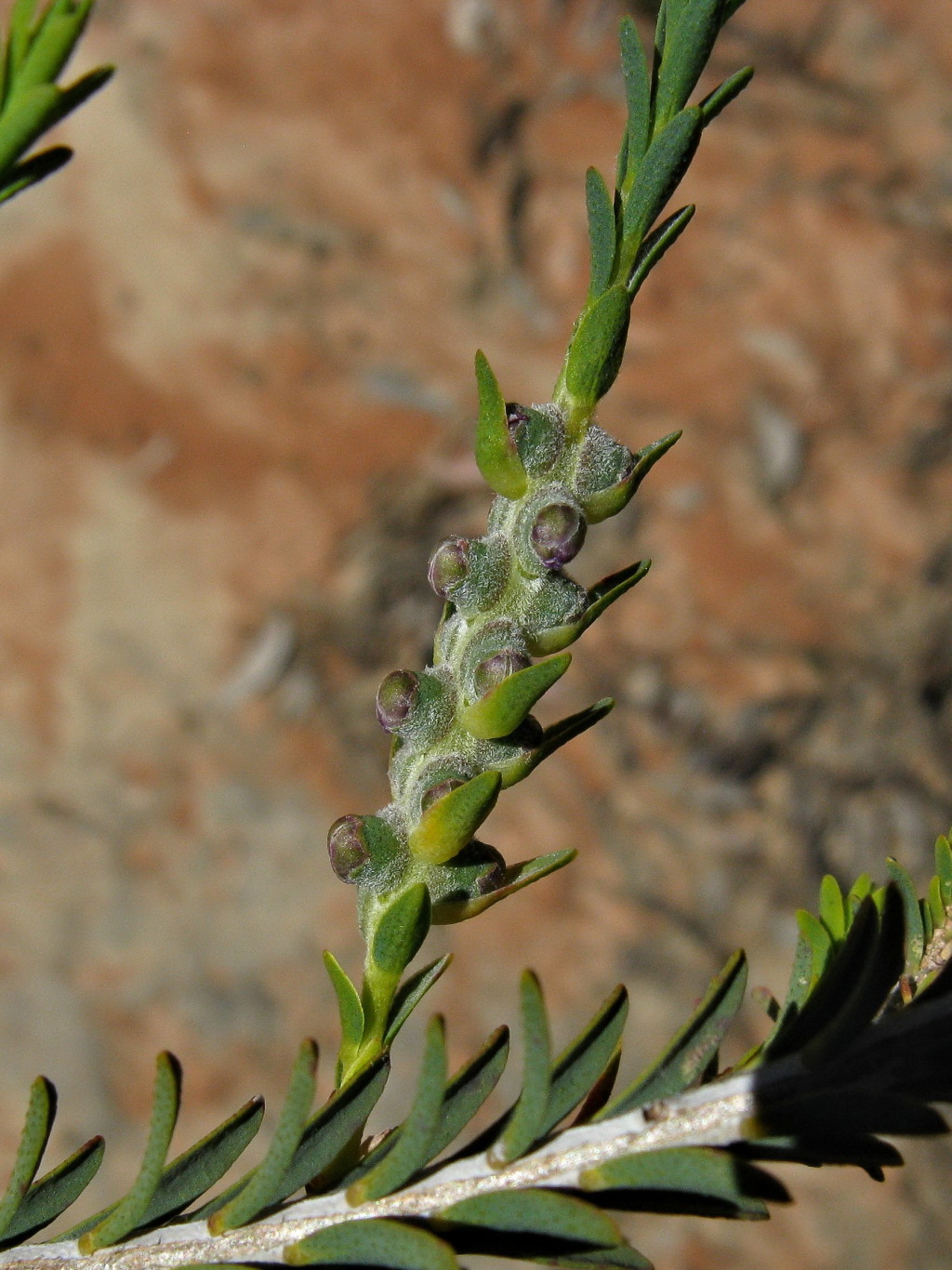Melaleuca decussata
R.Br. Totem-polesShrub 0.7–2(–3) m high, glabrous except for fine indumentum on stems. Leaves decussate, more or less sessile, linear to oblanceolate, 4–14 mm long, 1–3 mm wide, suberect, generally concave above, ridged and prominently gland-dotted below, veins obscure. Inflorescence a spike to c. 2.5 cm long, 1–1.5 cm wide; axis sparsely hairy, growing on into a leafy shoot. Flowers in up to 10 pairs per spike, mostly at the base of lateral leafy stems and subtended by narrowly triangular caducous bracts as long as the leaves; hypanthium c. 1 mm long, attached across a broad base; stamens 10–20 per bundle, pink to purple, claw 0.5–1.5 mm long, free parts of filaments 3–5 mm long. Capsules flask-shaped to spherical, c. 4 mm wide, eventually becoming submerged in the swollen leafy stem, some populations apparently not or seldom forming fruit. Flowers late spring and summer.
LoM, MuM, Wim, GleP, VVP, VRiv, GipP, OtP, WaP, Gold, CVU, GGr, DunT, NIS, HSF. Also SA. Occurs along watercourses, in swampy heathland, rocky outcrops, salt-pans and sandy flats mostly in the western part of the State, with an isolated easterly occurrence near Heyfield.
Melaleuca decussata and M. gibbosa sometimes intergrade and suspected hybrids are reported, for example, along the upper Glenelg River at Cherrypool (Willis 1973). Little Desert specimens with shorter, broader, more spreading leaves also approach M. gibbosa.
A number of populations (Mt Clay, Mt Arapiles, near Golton Creek in Grampians National Park, Langhi Ghiran area, Glenmaggie and Heyfield areas) apparently do not or seldom form fruit. At some of the sites (e.g. near Golton Creek, and Langhi Ghiran) the plants are also reduced in height (< 1 metre high), and can also grow with normal forms (i.e. plants that produce fruit, > 1 metre high) of the species such as near Golton Gorge.
Spencer, R.D. (1996). Melaleuca. In: Walsh, N.G.; Entwisle, T.J., Flora of Victoria Vol. 3, Dicotyledons Winteraceae to Myrtaceae, pp. 1027–1034. Inkata Press, Melbourne.
 Spinning
Spinning
